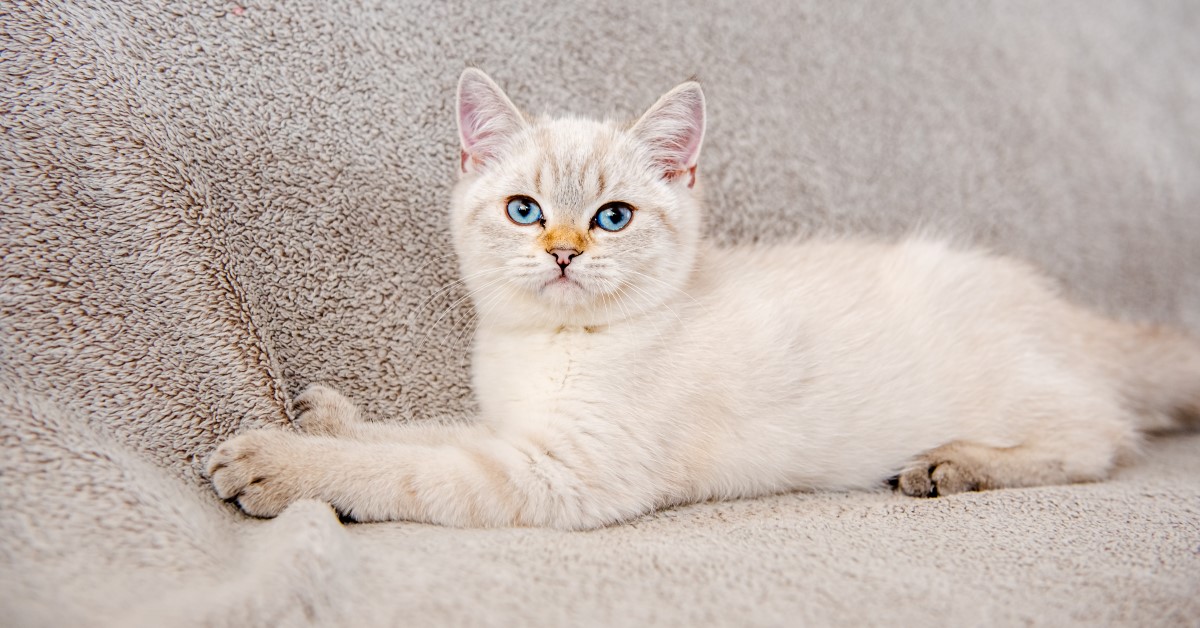Why Are White Cats With Blue Eyes Deaf?
Deafness in white-furred cats with blue eyes is highly prevalent due to a shared gene that is connected to inherited deafness in cats.

Nothing is as striking as seeing a snowy white cat with crystal clear blue eyes. But, it may come as a surprise to learn that most white-coated blue-eyed cats are deaf. But what is the reason for deafness to become so prevalent in white-coated cats? It turns out that inherited genes from the parent cats have a great deal with inherited deafness. Below, let's take a closer look at these beautiful cats to understand better why white cats with blue eyes have a higher likelihood of inherent deafness.
How Do Genes Play a Role?
Genes make up who we are, and the same is true for animals. Just as human genes may influence what color hair we have or how athletic we are, a cat's genes can determine its appearance and possible inherent traits, like deafness. It turns out that there is a strong link between the genes that create a white coat and blue eyes with deafness in cats.
Geneticists and cat breeders have long been fascinated with the connection between deafness and cats with white fur and blue eyes. Scientists have determined that one dominant gene, called W (for White), creates the snow-white coat coloration. This gene is also responsible for creating blue eyes and deafness.
If a cat carries the W gene, it will have a white coat with 100% certainty. However, if the cat carries the W gene, it may also have an equal likeliness for both deafness and blue eyes. Having equal chances of developing these two traits makes the gene incredibly linked to both eye color and inherent deafness. While the vast majority of white-coated, blue-eyed cats are deaf, not all are. Scientists believe that environmental factors and other recessive genes may contribute to the W gene, also contributing to deafness in cats.
How Likely Is Deafness in White Cats?
White cats are extremely popular with pet owners but only make up about 1.5% of the total cat population. Some white cats may have green or golden eyes, but a significant amount will have one or two blue eyes. It turns out the chances of having a deaf white-furred cat with blue eyes are rather substantial, which is all related to the same shared W gene that carries fur color, eye color, and inherited deafness. Cats with long white fur and blue eyes are three times more likely to be deaf.
If a white-furred cat has two blue eyes, the chances of that cat being deaf are between 60% and 80%. Shockingly, a white-furred cat with only one blue eye drops to only a 30% to 40% chance of being deaf. A white-furred cat with gold, green, or brown eyes only has a 10% to 20% chance of being deaf. When comparing these statistics to other cats with different fur colors, scientists find that deafness in non-white cats with any color eye color deafness is extremely rare. Non-white cats make up over 95% of the population, proving that deafness in white-furred cats is highly prevalent.
Is There a Test for Deafness in Cats?
Having a white cat is highly desirable, and some breeders will only work with white-furred cats. Because deafness is so prevalent in white-furred cats, breeders will regularly have to test for deafness in new kittens to properly manage and care for their cats. Luckily, there is a non-invasive and safe test that can quickly identify deafness in cats.
The BAER test is a simple test that a veterinarian can perform. The brainstem auditory evoked response test can be performed by a specialist and looks for an immediate response in cats. The test takes about 5 to 15 minutes to perform, and most cats can undergo the test without sedation. Not only does the test look for a hearing response, but it examines the structure of the ear to determine if deafness is present.
What Are the Challenges with a Deaf Cat?
Although there may be different challenges and aspects to raising a deaf cat as a pet, they are often just as healthy and vibrant as a cat that can hear. As a pet owner, you may have to take certain precautions to keep your pet healthy and safe. If you own a deaf cat, here are some best practices and tips for keeping your pet happy.
- Be Mindful of Vibrations - Deaf cats are often more sensitive to movement and vibrations. Be sure to move carefully around your cat. Because your cat cannot hear, using vibrations to get their attention or wake them from sleep could be a viable means of communication.
- Indoors Only, Please - Deaf cats are not able to hear approaching predators or passing cars. The outdoors can be an extremely dangerous place for a deaf cat. Always keep your deaf cat as an indoor cat only.
- Hand Signals - Many deaf cats can quickly learn hand signals and motions. Teach your cat sign language when it is time to come, eat, or get off the sofa.
- Approach From the Front - Deaf cats can be startled if you sneak up behind them. Be sure to always approach a deaf cat from the front, so it can see you coming.
Ready to start saving money on pet wellness care?
Then take a look at Mint Wellness, the pet wellness plan that provides fast reimbursement on routine pet care. Save on vaccinations, wellness exams, preventatives, dental, and more!
Learn More


